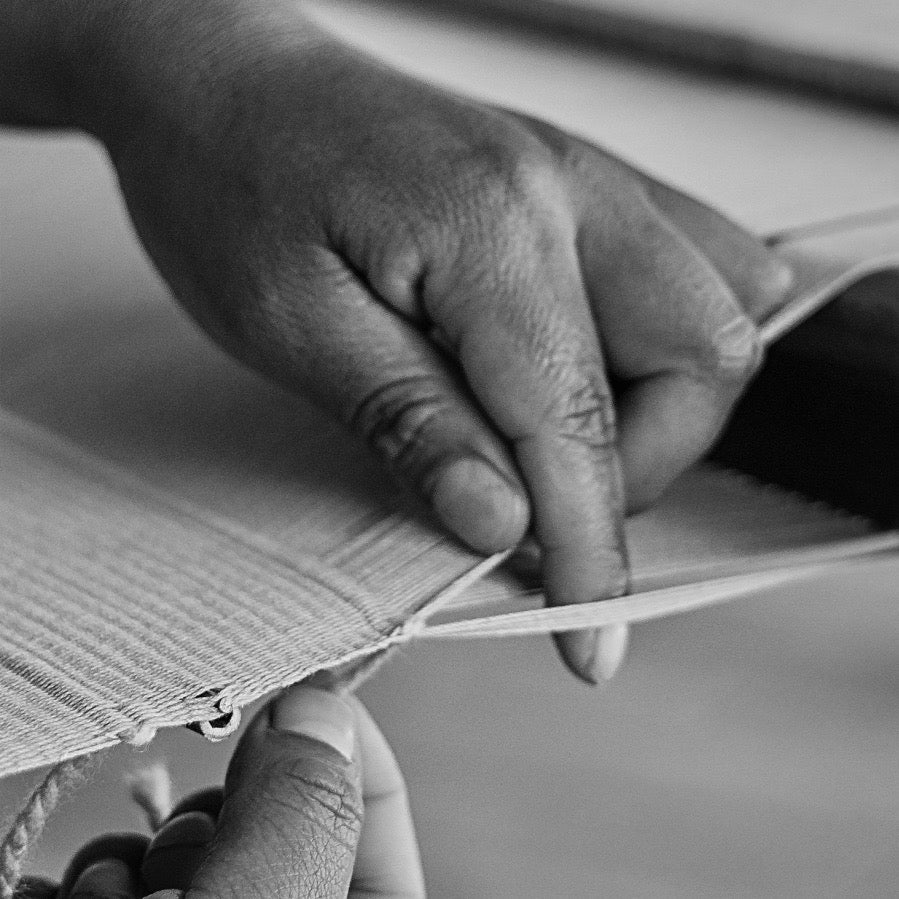Unraveling the Artistry of Mexican Textile Weaving
Nestled in the southernmost part of Mexico are the relatively undiscovered states of Oaxaca and Chiapas. This special area of the country has maintained many of its historic traditions, including textile weaving. Their deep-rooted culture has withstood the test of time without a doubt, despite the growing popularity of tourism.
Wandering through the historic streets of Oaxaca City you admire the colorful homes and storefronts. You listen to the sounds of traditional music fill the Zócalo – the central square of the city. You sip on smoky local mezcal. As you do these things, you start to notice all the vibrant local textiles and intricate handicrafts that adorn every nook of this special town.
Chiapas, located on the border of Guatemala, is home to jungle and mountainous landscapes. Consequently, it is a slightly more mysterious destination. Here you will find well-known archeological finds like Palenque and the colonial city of San Cristobal de las Casas, which is home to a large population of indigenous groups. It is an UNESCO world heritage site because of the diversity and the artisan traditions that the people share with the world. As we explored Oaxaca City in Oaxaca and San Cristobal de las Casas in Chiapas, the stunning hand-woven textiles left an impression. We wanted more, so Mexican textiles are one of the first products that the Wanderluxe Home brand will feature. We couldn’t be more excited to share with you the masterful artistry of these weavers.
A Brief History of Textile Weaving in Mexico
Since 1400 BCE textile weaving has been an integral piece of Mexican culture and heritage.
It is a centuries-old trade that allows artisans to share stories and create beauty. Ultimately, it is a trade that has become a way of life for many indigenous communities. Tribes like the Zapotec and Aztecs started the creation of textiles utilizing the land. They crafted string and dyes from plants and insects, moving on to add cotton as they conquered more land. They crafted clothing and homewares that changed after the Spanish colonization of Mexico. The Spanish introduced new methods, new materials, new styles. Today you can find that transformation documented in a few museums in Oaxaca and Chiapas. Their goal is to preserve the evolution of the trade.
Today, Mexican textiles are still majorly produced by a handful of indigenous cultures. The pieces they create showcase an intricate continuation of indigenous history and culture that is truly special.
Styles of Weaving
Local artisans use many techniques to create their beautiful textiles. But, the two that we became most familiar with are backstrap weaving and pedal loom weaving. As we explored the different co-ops and artisan stalls in Oaxaca and Chiapas, we learned more about both methods. We even got to try our hand at pedal loom weaving while guided by some of our new artisan friends. While it was an incredible experience, we decided it was a good idea to leave the weaving to the experts!
Both methods involve the artisan formulating a design prior to the start. The designs are often characterized by triangular and zig-zag patterns. Evidently the designs are born from the designs carved into the Mayan ruins like Palenque. To craft the design, the weaver must hand-select a specific count of threads and weave a second spool through the threads to craft the design.

Backstrap Weaving
Backstrap weaving is the most traditional form of weaving. It originated thousands of years ago during pre-Hispanic times in Mexico. The weaving tool has two beams, which are typically made of wood. The weaver straps one beam to their back, hence the namesake. Then, they secure the other beam to an anchored object of some sort. The weaver then strings the thread through the two beams. To craft the designs, the weaver maneuvers their body in a way that adjusts the angles and tension. They also use a heddle rod to separate threads. It provides slightly more control than other methods of weaving and produces pieces that are longer and narrower.

Pedal Loom Weaving
Pedal loom weaving is a method of textile weaving that started after the Spanish arrived in the 15th century. The pedal loom is a large standing structure crafted from solid wood beams. To weave a textile, the weaver feeds the thread through so the pedals can separate the threads. They don’t need to use a heddle rod because the pedals do the work. This innovation allowed weavers to create textile pieces that were much wider. Unlike the backstrap weaving method, it does not limit the piece to the arm span of the weaver. Artisans use this technique to craft larger pieces like blankets.
Regardless of what technique is being used, we learned firsthand that textile weaving is an art form that takes mentorship and practice.
Where to Explore the Art & History of Textiles in Mexico

Museo Textil Oaxaca – Oaxaca, Mexico
Situated in the center of Oaxaca in a stunning historic convent constructed in the mid-1500s, you will find the Museo Textil de Oaxaca. This museum displays and preserves the art of Mexican textiles. They also provide education to keep the craft alive. They share over 10,500 pieces of textile art that date back hundreds of years. Take a guided tour to discover the history and stories behind some of the most impressive pieces in the collection.
Centro textiles San Cristobal de las Casas – San Cristóbal de Las Casas, Chiapas, Mexico
Formed in 2000, the Centro Textiles del Mundo Maya serves as a cultural hub to showcase and preserve the art of textile weaving. They share exhibitions of historic collections that showcase the artform of textile weaving. Most importantly, they also work with local communities and artists to preserve this unique trade by teaching new generations.
Local Artisan Markets – Oaxaca and Chiapas
The best places to explore if you’re searching for textiles to purchase is the local artisan markets. As many of the indigenous people in this region of Mexico make their living from their handicrafts, these artisan markets are a critical piece of the local economies. They are typically one of the best places to begin to experience the culture of the region. If you’re lucky, you’ll even observe a demonstration of the creation of these artfully crafted textiles!
Artisan Markets in Oaxaca
-
Mercado de Artesenías de Oaxaca: An indoor market with a variety of stalls. Many stalls focus on textiles ranging from traditional clothing to home décor.
-
La Casa de las Artesenías de Oaxaca: A shop selling an eclectic mix of textiles, hand carved collectibles, papel picado, and more.
Artisan Markets in San Cristóbal de Las Casas, Chiapas, Mexico
-
Mercado de Artesanías de Santo Domingo: An indoor marketplace with hundreds of stalls in Central San Cristobal.
-
Mercado de Artesenías de San Juan Chamula: A special Sunday market located 6 miles outside of San Cristobal that gives you a true feel for the culture of Chiapas.



